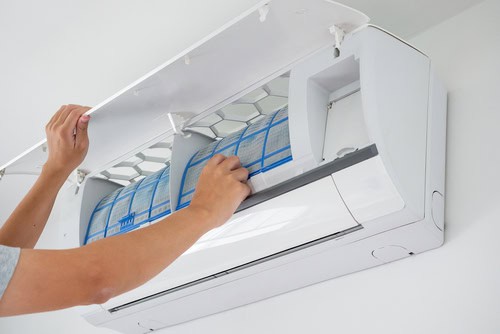
DIY Fixes for Minor Aircon Problems. Air conditioning systems play a vital role in maintaining comfort and indoor air quality, especially in warm climates.
However, like any mechanical system, aircon units can experience minor issues from time to time.
In this article, we’ll explore some common DIY fixes for minor aircon problems that homeowners can tackle themselves to keep their systems running smoothly.
Safety Precautions
Before attempting any DIY fixes on your aircon unit, it’s essential to prioritize safety.
Always start by turning off the power source to the unit to prevent the risk of electric shock.
Additionally, wear protective gear such as gloves and safety glasses to avoid injury during maintenance tasks.
Cleaning Air Filters
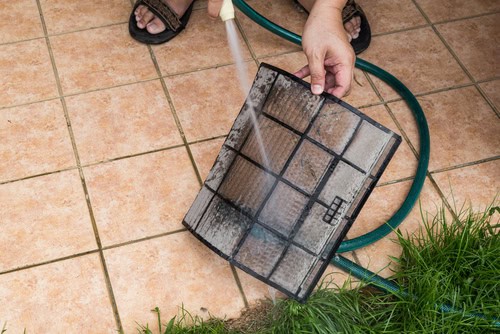
Air filters play a crucial role in maintaining the efficiency of your aircon system by trapping dust, dirt, and other particles from the air.
Over time, these filters can become clogged, reducing airflow and efficiency. To clean air filters:
- Turn off the power to the aircon unit.
- Remove the filter from the unit.
- Use a vacuum cleaner or rinse the filter with water to remove dirt and debris.
- Allow the filter to dry completely before reinstalling it.
- Check the manufacturer’s recommendations for filter replacement frequency and replace if necessary.
Regular cleaning of air filters can help improve airflow and energy efficiency while also prolonging the lifespan of your aircon unit.
Checking and Cleaning Vents
Blocked or dirty vents can restrict airflow and reduce the effectiveness of your air conditioning system. To check and clean vents:
- Inspect each vent in your home for any signs of blockages or dust buildup.
- Use a vacuum cleaner or a soft brush to remove any dirt or debris from the vents.
- Ensure that all vents are open and unobstructed to allow for proper airflow.
Regular maintenance of vents can help ensure consistent cooling throughout your home and prevent unnecessary strain on your aircon system.
Unclogging Drain Lines
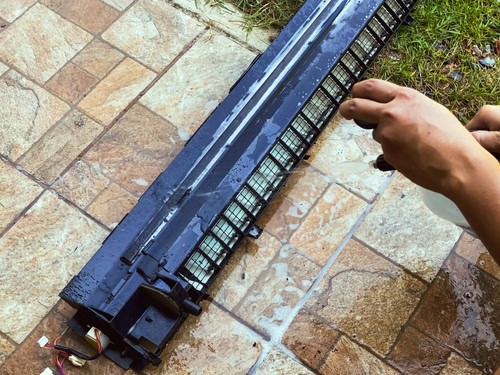
The drain line in your aircon unit is responsible for removing condensation and excess moisture from the system.
Over time, these drain lines can become clogged with dirt, algae, or other debris, leading to water leaks or system malfunctions. To unclog drain lines:
- Turn off the power to the aircon unit.
- Locate the drain line and inspect it for any blockages.
- Use a wet/dry vacuum or a pipe brush to remove any obstructions from the drain line.
- Flush the drain line with a mixture of hot water and vinegar to clean it thoroughly.
- Repeat the process until the drain line is clear and water flows freely.
Regular maintenance of drain lines can prevent water damage to your home and ensure the efficient operation of your aircon system.
Inspecting and Cleaning Coils
The evaporator and condenser coils in your aircon unit play a crucial role in the cooling process by transferring heat to and from the air.
Over time, these coils can become dirty or covered in debris, reducing their efficiency. To inspect and clean coils:
- Turn off the power to the aircon unit.
- Remove any debris or obstructions from around the coils.
- Use a coil-cleaning solution and a soft brush to gently clean the coils.
- Rinse the coils thoroughly with water and allow them to dry completely before reassembling the unit.
Regular cleaning of coils can help maintain optimal cooling performance and prevent unnecessary strain on your aircon system.
Fixing Condensate Pan Leaks
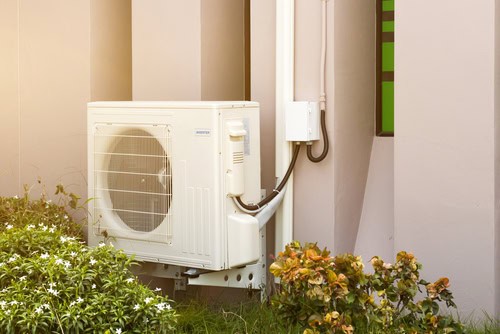
The condensate pan in your aircon unit collects moisture and condensation produced during the cooling process. Over time, the pan can develop leaks or cracks, leading to water damage. To fix condensate pan leaks:
- Turn off the power to the aircon unit.
- Inspect the condensate pan for any signs of leaks or cracks.
- Use epoxy or waterproof sealant to patch any holes or cracks in the pan.
- Allow the sealant to dry completely before restoring power to the unit.
Addressing condensate pan leaks promptly can help prevent water damage to your home and ensure the efficient operation of your aircon system.
Dealing with Refrigerant Leaks
Refrigerant leaks can occur in aircon systems over time, leading to reduced cooling performance and potential health hazards.
While major refrigerant leaks should be addressed by professional, minor leaks can sometimes be temporarily sealed to prevent further loss. To deal with refrigerant leaks:
- Turn off the power to the aircon unit.
- Locate the source of the leak and assess its severity.
- If the leak is minor, use refrigerant sealant to temporarily seal the leak.
- Monitor the system for any signs of continued leakage and consult a professional if necessary.
It’s essential to address refrigerant leaks promptly to prevent further damage to your aircon system and ensure the safety of your home.
Addressing Noisy Operation

The noisy operation can be a common issue with aircon systems and can be caused by loose components, worn bearings, or debris in the system.
While some noise is normal during operation, persistent or unusually loud noises may indicate underlying issues. To address noisy operations:
- Turn off the power to the aircon unit.
- Inspect the unit for any loose or damaged components, such as fan blades or motor mounts.
- Tighten any loose components and replace any damaged parts as needed.
- Lubricate moving parts, such as fan motors or bearings, to reduce friction and noise.
- If the noise persists, consult a professional technician for further diagnosis and repair.
Addressing noisy operations promptly can help prevent further damage to your aircon system and ensure a quieter and more comfortable indoor environment.
Adjusting Thermostat Settings
Proper thermostat calibration is essential for maintaining optimal comfort and energy efficiency in your home. If your aircon system is not cooling or heating your home as expected, adjusting the thermostat settings may help. To adjust thermostat settings:
- Turn off the power to the aircon unit.
- Access the thermostat controls and adjust the temperature settings as needed.
- Consider programming your thermostat to adjust temperature settings automatically based on your schedule and preferences.
- Monitor the system to ensure that the desired temperature is maintained consistently.
Regularly adjusting thermostat settings can help optimize energy usage and improve comfort levels in your home.
Regular Maintenance Practices
In addition to addressing specific issues as they arise, regular maintenance of your aircon system is essential for ensuring optimal performance and longevity.
Creating a maintenance schedule and checklist can help you stay on top of routine upkeep tasks and prevent minor issues from becoming more significant problems. Some essential maintenance practices include:
- Cleaning air filters regularly to maintain airflow and efficiency.
- Inspecting and cleaning coils to ensure optimal heat transfer.
- Checking and cleaning vents to prevent blockages and ensure proper airflow.
- Testing thermostat calibration and adjusting settings as needed.
- Monitoring the system for any signs of leaks, noise, or other issues.
By incorporating these maintenance practices into your routine, you can extend the lifespan of your aircon system and enjoy reliable performance year-round.
DIY Fixes for Minor Aircon Problems – Conclusion
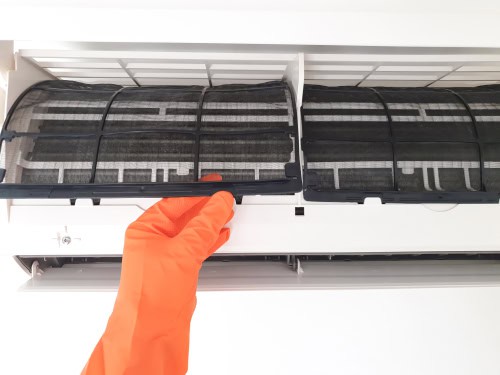
Maintaining a comfortable and efficient indoor environment relies on the proper functioning of your air conditioning system.
While some issues may require professional attention, many minor problems can be addressed through simple DIY fixes.
By following the tips outlined in this article and prioritizing regular maintenance, homeowners can keep their aircon systems running smoothly and efficiently for years to come.
Remember to always prioritize safety when performing DIY maintenance tasks and consult a professional technician for any issues beyond your expertise.
With proactive care and attention, you can ensure that your aircon system continues to provide reliable cooling and comfort for your home.
Are you seeking for professional and reliable aircon services in Singapore? Contact us today!
